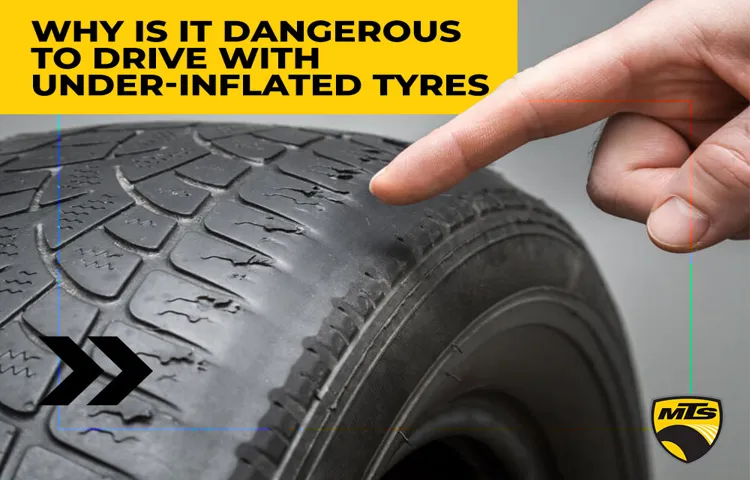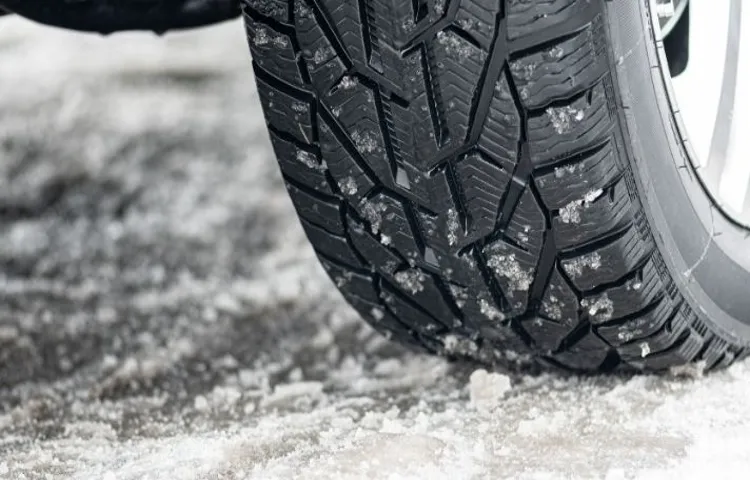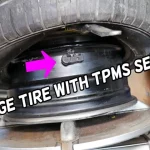Do you ever think about the air pressure in your car’s tires? It’s easy to overlook this crucial aspect of car maintenance, but the truth is that underinflated tires can be dangerous. Not only do they increase your risk of getting a flat tire, but they can also negatively impact your vehicle’s handling and fuel efficiency. Think of it like this: driving on underinflated tires is like trying to run a marathon with a bad cough.
You might start out feeling okay, but as the race goes on, you’ll start to feel more and more tired and your performance will suffer. The same goes for driving on underinflated tires. At first, you might not even notice the difference, but over time, you’ll experience decreased control over your vehicle and your gas mileage will suffer.
But it’s not just about money and convenience – underinflated tires can be downright dangerous. When tires aren’t properly inflated, their sidewalls flex more, which generates heat. Over time, this can cause the tire to break down and ultimately fail, which could result in a blowout while you’re driving.
This is especially dangerous at high speeds, where a blowout could cause you to lose control of your vehicle and potentially cause an accident. In short, underinflated tires aren’t something to take lightly. By staying on top of your tire pressure and making sure your tires are properly inflated, you can help keep yourself and others on the road safe.
So the next time you’re getting in your car, take a few extra minutes to check your tire pressure – it just might save you a whole lot of trouble down the road.
Table of Contents
Why Underinflated Tires Flex
Have you ever wondered why it’s important to keep your tires properly inflated? Well, underinflated tires flex too much and build up heat, which can lead to tire blowouts. When your tires are not inflated to the recommended pressure, their sidewalls become weaker and unable to support the weight of your vehicle. This causes them to flex more than they’re designed to, generating a lot of heat in the process.
This buildup of heat weakens the integrity of the rubber and can cause it to suddenly burst – leading to a potentially dangerous blowout. In addition to the risk of blowouts, driving on underinflated tires also increases fuel consumption, reduces vehicle handling, and shortens the lifespan of your tires. So, be sure to check your tire pressure regularly and fill them up to the recommended levels to avoid these issues and keep yourself safe on the road.
Tire Pressure and Flexibility
Tire Pressure and Flexibility Have you ever wondered why it’s important to keep your tires properly inflated? Aside from improving fuel efficiency and increasing the lifespan of your tires, maintaining proper tire pressure is also crucial for your safety on the road. One of the reasons why it’s so important to keep your tires inflated to the correct pressure is that underinflated tires tend to flex more than properly inflated ones. This increased flex can cause your tires to generate excessive heat and increases the likelihood of a blowout.
Properly inflated tires, on the other hand, flex only as much as necessary to conform to the contours of the road. As a result, they generate less heat, which prolongs the lifespan of your tires and helps keep you safe while driving. So, if you want to avoid the headaches and dangers of underinflated tires, be sure to check your tire pressure regularly, and inflate your tires to the recommended pressure levels.
It’s a small step that can make a big difference in your safety on the road.

What Happens When Tires Flex Too Much
Underinflated tires can cause significant tire flexing, which can lead to numerous problems such as tire wear, decreased fuel economy, reduced handling and traction, and even tire blowouts. When there’s not enough pressure within the tire, the sidewalls become more susceptible to bending and flexing, which can lead to an uneven tire footprint and irregular wear. Additionally, underinflated tires can cause the tire to heat up quickly, which can increase the likelihood of tire failure.
Therefore, it’s essential to ensure that your tires are inflated correctly by regularly checking the tire pressure and maintaining it within the recommended range. So, if you want to avoid unwanted tire expenses and ensure a comfortable and safe ride, make sure your tires are properly inflated and free from excessive flexing.
Building up Heat with Underinflated Tires
Did you know that underinflated tires can be a serious hazard on the road? It’s not just about reduced fuel economy and tire wear – there’s also the risk of a blowout. When tires are underinflated, they flex too much, which can lead to a dangerous build-up of heat. This can cause the rubber to weaken and eventually fail, leading to a sudden blowout while driving.
To avoid this, it’s important to regularly check your tire pressure and keep your tires inflated to the manufacturer’s recommended level. Don’t take any risks when it comes to your safety on the road – keep an eye on your tire pressure and avoid the dangers of underinflated tires.
How Heat Contributes to Tire Blowouts
Underinflated tires can build up heat and contribute to tire blowouts. When a tire is underinflated, it flexes more than it should while in motion. This increased flexing creates friction, which results in the tire heating up more than it would if it were properly inflated.
If this heat build-up isn’t managed properly, it can cause the rubber to degrade and weaken, leading to a blowout. It’s important to keep tires properly inflated to prevent this from happening. Not only will it extend the life of your tires, but it also keeps you safe while on the road.
Remember, a simple check of your tire pressure can save you a lot of inconvenience and danger on your journey.
The Role of Pressure in Preventing Blowouts
When it comes to preventing blowouts, maintaining proper tire pressure is essential. Running on underinflated tires can lead to a buildup of heat, which puts extra stress on the rubber and increases the risk of a blowout. This is especially true for heavy vehicles or those that do a lot of highway driving.
The excess heat can cause the tire to deteriorate quickly and break down, leading to a rupture or explosion. By keeping your tires properly inflated, you’re ensuring that they can handle the load and will stay cool even under intense working conditions. Checking your tire pressure regularly and adjusting it as needed is a simple yet effective way to prevent costly and dangerous blowouts on the road.
So, the next time you hit the pavement, make sure your tire pressure is up to par and avoid putting unnecessary pressure on your rubber!
Tire Pressure and Temperature
Tire Pressure and Temperature Have you ever noticed your vehicle’s tire pressure warning light come on while driving on a hot summer day? Most drivers might ignore it and continue driving without properly checking their tire’s pressure, but this can lead to dangerous consequences. Underinflated tires create a significant amount of heat due to the higher surface area of contact with the road. As the tire temperature rises, it further complicates the problem by reducing air pressure even further.
This cycle can lead to tire failure or even a blowout on the road. So, it’s critical to check your tire pressure regularly and adjust it according to manufacturer recommendations. A quick and easy fix that can ultimately save your life and prevent an unexpected breakdown on the side of the road.
How to Avoid Underinflated Tires
Have you ever wondered why tire blowouts occur? One of the main culprits of tire blowouts is underinflated tires. When tires are not properly inflated, they tend to flex too much, which results in the buildup of heat. This can ultimately lead to tire blowouts, which can be extremely dangerous, especially when you are driving at high speeds.
To avoid underinflated tires, it’s important to check your tire pressure regularly and inflate them to the recommended levels. You can find the recommended tire pressure for your vehicle in your owner’s manual or on a sticker located on the inside of your car door. So, the next time you hit the road, make sure your tires are properly inflated to avoid any potential hazards.
Remember, taking a few minutes to check your tire pressure can save you from a potential tire blowout.
Checking Your Tire Pressure
As a responsible driver, it’s essential to check your tire pressure regularly to avoid underinflated tires. Not only do underinflated tires negatively impact your vehicle’s handling and fuel efficiency, but they also pose a safety risk by increasing the likelihood of a blowout. The good news is that checking your tire pressure is a simple task that can be done with a tire pressure gauge.
Make sure to consult your vehicle owner’s manual for the manufacturer’s recommended pressure levels and check your tire pressure at least once a month or before embarking on a long journey. Keep in mind that tire pressure can fluctuate with changing weather conditions, so it’s crucial to check your tire pressure more frequently during extreme hot or cold temperatures. Remember, maintaining proper tire pressure not only prolongs the life of your tires but also helps keep you and your passengers safe on the road.
Maintaining Proper Inflation
Maintaining proper tire inflation is critical to keep your car running safely and smoothly. Underinflated tires are a common problem that can lead to a variety of issues. When your tires are underinflated, they don’t hold their shape as well, causing more friction and wear.
This can lead to decreased gas mileage, poor handling, and even blowouts. To avoid these problems, it’s important to check your tire pressure at least once a month and add air as needed. You can find the recommended tire pressure in your car’s owner manual or on the driver’s side door jamb.
It’s also essential to check the tires’ pressure when they’re cold because hot tires give inaccurate readings. A simple tire gauge can help you determine the pressure and easily add air as needed. By regularly checking and maintaining proper tire inflation, you can keep your car running smoothly, increase gas mileage, and prevent tire blowouts.
Conclusion
So, remember folks, a little air goes a long way! Keep those tires properly inflated to avoid turning your drive into a fiery hot mess.”
FAQs
How do underinflated tires affect driving?
Underinflated tires can cause excessive flexing and buildup of heat, leading to potential tire blowouts.
Can underinflated tires affect fuel economy?
Yes, underinflated tires can lower fuel efficiency as the added flexing increases the rolling resistance.
When should tire pressure be checked?
It is recommended to check tire pressure monthly or before long trips to ensure proper inflation.
What is the recommended tire pressure for vehicles?
The recommended tire pressure can vary by vehicle and can be found in the owner’s manual or on the tire information label located on the driver’s side door jamb.
Can overinflating tires be just as bad as underinflating them?
Yes, overinflated tires can cause a harsher ride and increased wear on the center of the tire, leading to a shorter lifespan.
How does tire tread depth affect driving safety?
Low tread depth can negatively impact traction, especially on wet and slippery roads, increasing the risk of skidding and accidents.
Is it recommended to replace all tires at once?
Yes, it is recommended to replace all four tires at the same time to maintain consistent handling and performance.



